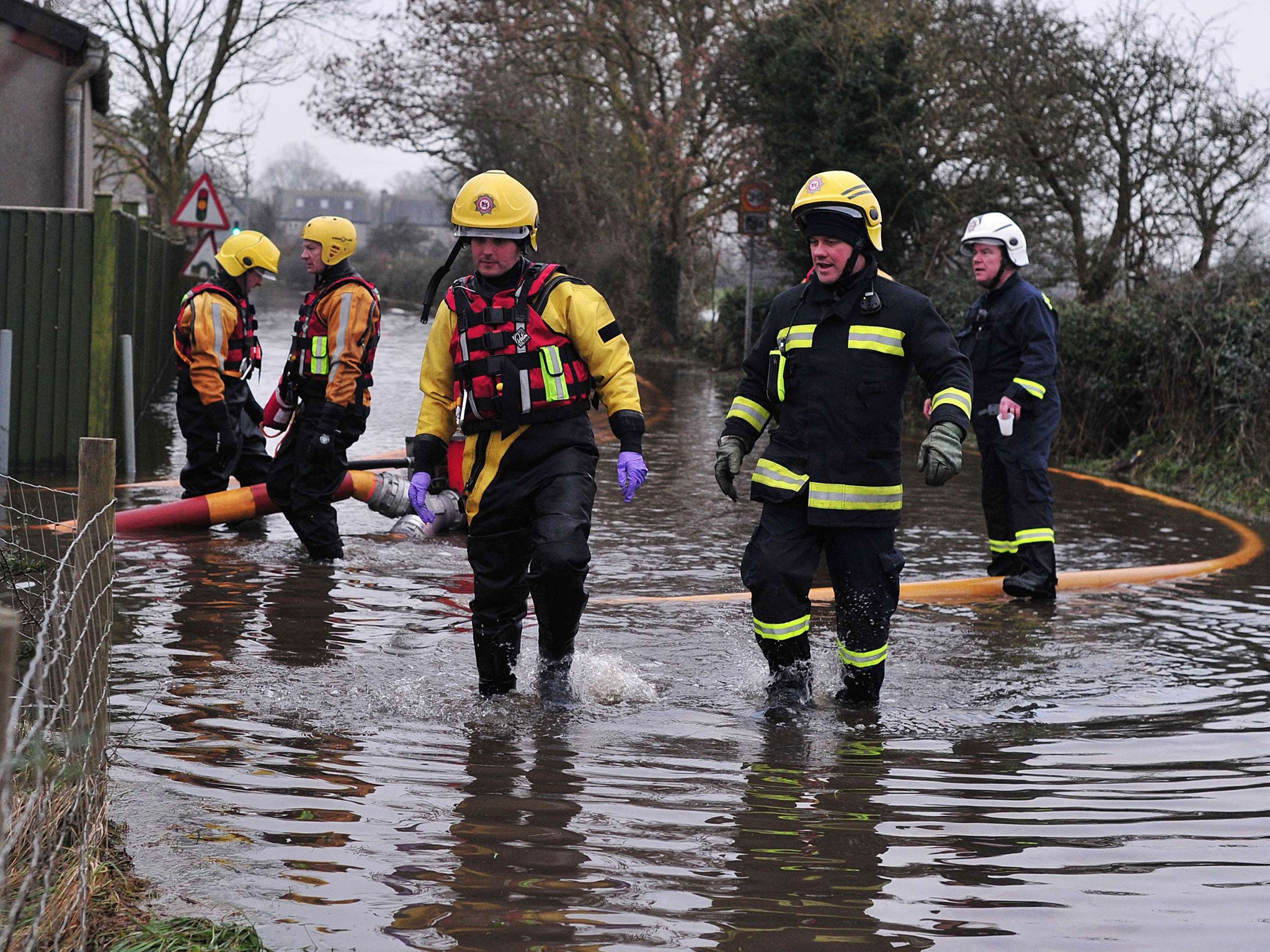As an island nation, we will in the end have to accept that the sea will continue to reshape our landscape
It is unrealistic to fortify the whole of the South-west and flood defences obstruct open views


Those flooded out of their villages on the Somerset Levels since Christmas might have looked a little enviously at the frantic goings on in Dawlish yesterday. Having a section of a major railway line collapse into the sea, cutting off rail access to Devon and Cornwell, drew the sort of immediate, full-court, emergency response it had taken the good folk of Somerset almost six weeks to attract.
In the end, though, they had eventually received the top-level attention they felt to be their due. First, there was the rather sheepish, or so it seemed, Environment Secretary, Owen Paterson, who had no convincing explanation as to why he had not made the journey all the way from his Oswestry constituency before.
Then up turned Lord Smith, the head of the Environment Agency (not to be confused with Patterson’s Environment Department), whose absence, like his precise responsibilities, remained largely unexplained. And last – but, of course, not least – the national reference point on all matters countryside, the Prince of Wales.
Prince Charles, it should be noted, was the only one of the three to do flood PR properly: in a boat, in his wellies and his waterproofs, and gushing huge amounts of sympathy. But then his staff had had ample time to prepare. Why do our politicians do this so badly? I know why they struggle with heat and drought – it is because we regard these as exceptional, and even a bit of a treat until they get out of hand. But water? Even a lot of it? In the wrong places?
Nor is it as though there are insufficient lessons from elsewhere. Angela Merkel’s predecessor at the helm of Germany’s centre-right, Edmund Stoiber, can blame floods in his home state of Bavaria for the loss of the 2002 election. The rain was still falling when the then Chancellor and electoral underdog, Gerhard Schroeder, planted his wellies demonstratively on his rival’s sodden streets, a good two weeks before Stoiber, returned from holiday and pulled on his designer rain gear in a lamentable effort to follow suit.
George W Bush, nice and dry in the presidential helicopter, you may recall, chose to view the 2005 Katrina catastrophe in New Orleans only from the air first time around, as though he was a tourist, rather than the individual ultimately responsible for the national response. David Cameron managed a sympathetic article in the Western Daily Press, and yesterday at Prime Minister’s Questions mentioned some cash, while citing “Cobra meetings on an almost daily basis” as proof that the Government had not fallen down on the job. As so often, there was a hint that officialdom tends to regard meetings and actions as the same thing.
It will be no consolation to those wading through new lakes in the West country, or to those who lost power for days over Christmas, to know that the national picture has been less dire than might have been feared, given the force of wind and the volume of water. In the east, the defences built up after the disaster of 1953, held up well, and the Thames Barrier has done its job for London.
But it is unrealistic to fortify the whole of the South-west, and while flood defences may save the land, they obstruct the open views that drew many people to live there. Which prompts two conclusions. First, anyone – whether a construction company or an individual – who builds on land that is prone to flooding, and that includes flood plains, whose very purpose is to flood, must accept the consequences.
The extent to which building has been permitted on flood plains over the past 30 years, without the builders or councils being required to provide (expensive) flood protection has sown the watery harvest we are now reaping. The risk was transferred to the insurance companies which, when the pay-outs become too great, appealed to the Government for help that comes, in the end, from our taxes. New building on floodplains (or glorious, but fragile areas, such as the Somerset Levels) should be made to cost what that risk really costs. At present, it is heavily, but covertly, subsidised.
The second conclusion which follows from this, is that some parts of the coast or near-coast, may have to be given up to the sea. Islands are vulnerable; the water has always encroached on the landscape. There really is enough land to build on elsewhere.
When I lived in Washington DC, one of my favourite excursions was to Chesapeake Bay and we flirted with buying a little clapboard house on Cobb Island, a one-time fishing community of now mostly second homes, connected to the mainland by a causeway. But the project was not quite as simple as it seemed.
When we looked at one, rather run-down, house, the agent unfolded a big map. We had to understand, he said, that Cobb Island was particularly fragile. The plot, as marked, was accurate today, but the likelihood was that it would shrink, and he pointed to where the coastline had been only a few years before. It would have been a glorious retreat, but it came with a salutary sense of impermanence, too.

Join our commenting forum
Join thought-provoking conversations, follow other Independent readers and see their replies